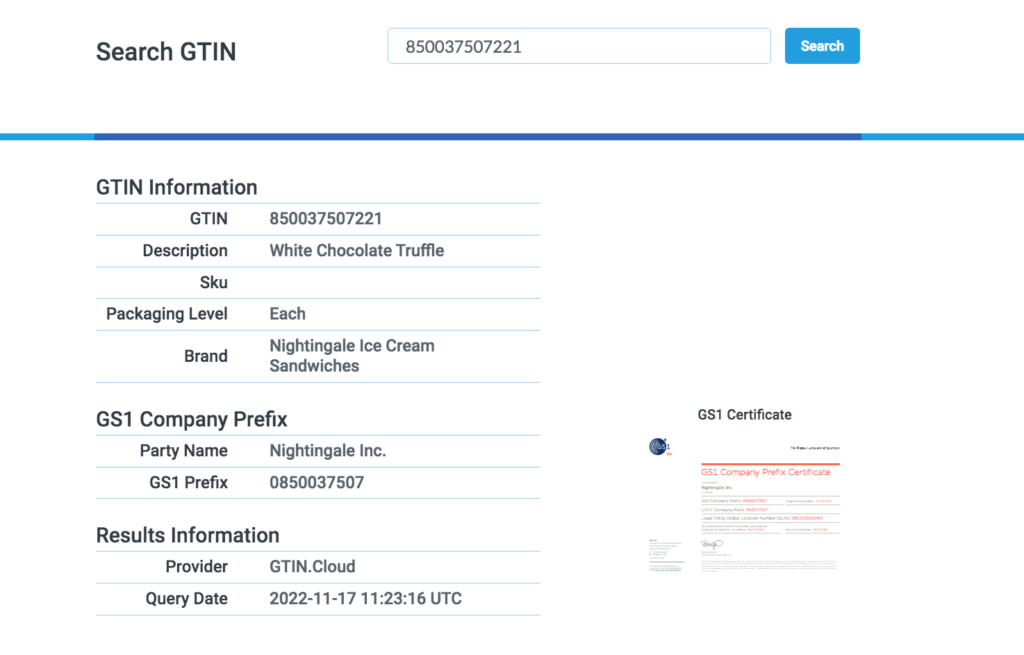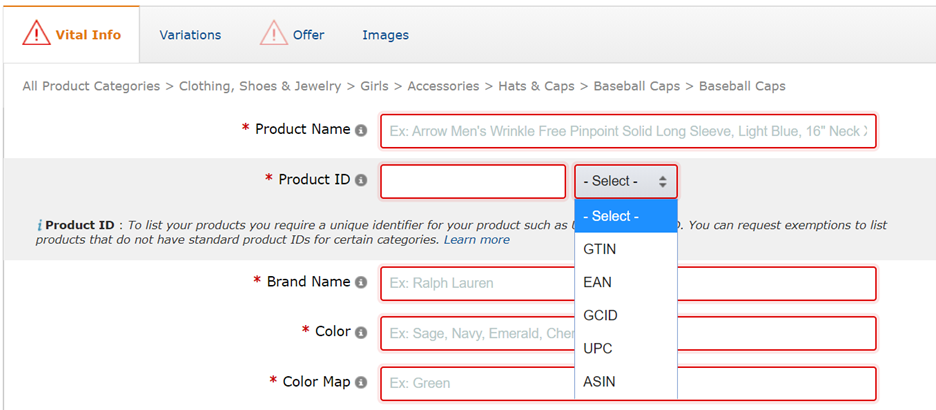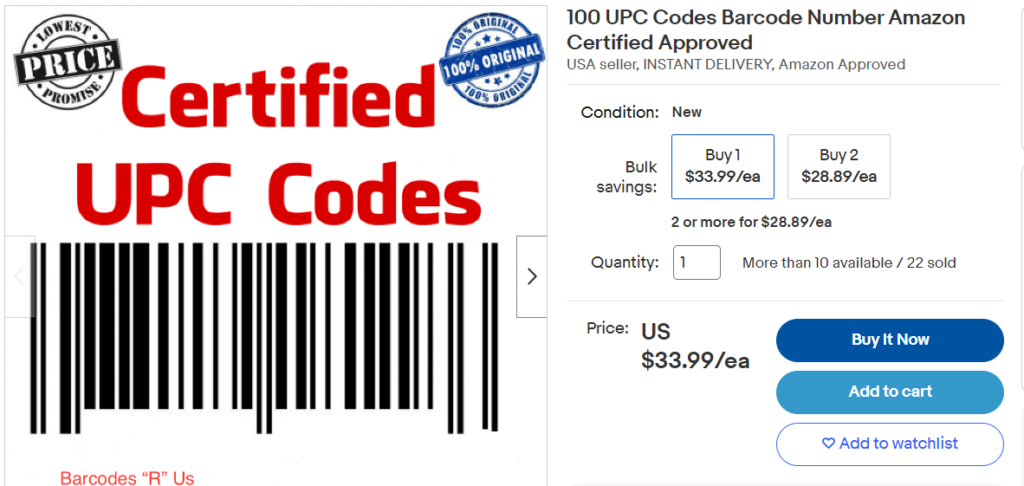Having Issues Listing Your Product on Amazon? Read On!
Why GTIN and Listing Problems Are Common on Amazon
The short answer is Amazon is to blame for many of the supplier product listing issues occurring today. In its early years, Amazon was hyper-focused on growth and redefining supply chain logistics. Rather than basing its systems around existing global standard product identifiers, Amazon established its own identifiers called ASINs (Amazon Standard Identification Numbers). Although assigning internal identifiers is a common practice, Amazon did not originally provide good guidance on how global identifiers, such as UPC and ISBN should be associated with ASINs.
By neglecting to address the importance of brand-licensed UPCs (GTINs) through ambiguous directions and neglecting to validate GTIN data, many suppliers entered GTIN data that either was completely incorrect or unknowingly purchased non-authentic UPCs (GTINs). The result, new and existing suppliers are routinely running into situations in which Amazon is rejecting or deactivating product listings.
In 2016, Amazon began to better appreciate the situation and the importance of authenticity. This article will address common Amazon listing problems and provide corrective actions which may rectify particular issues.
GTIN Hijacking
Somebody Already Entered Your GTIN for Their Product
Although all of the Amazon product listing problems are aggravating, GTIN hijacking is one of the issues in which suppliers feel completely helpless and vulnerable. Even if a supplier did everything right (see the remainder of this article), they can still be the victim of GTIN hijacking. This occurs when an unrelated Amazon vendor associates someone else’s GTIN with their own product. Amazon’s system will block any new product listing if it detects an existing GTIN, regardless if it is licensed to another company.
We receive calls daily from suppliers who had their own UPC Company Prefix and GTINs for decades plagued by an error message from Amazon that the GTIN they are entering is already associated with another product ASIN. In some cases, the problematic product ASIN may even be deactivated in Amazon’s system and still denote an error. If this occurs to you AND your company has a correctly brand-licensed UPC Company Prefix/GTINs, you will need to escalate the violation to Amazon Seller Central and provide them authentication of your GTIN ownership.
When companies license and renew their UPC Company Prefix and GTIN licenses they receive a formal certificate. Companies who obtained UPCs prior to 2002, would have a letter from the UCC (Uniform Code Council).
Amazon uses tools such as GTIN.cloud (right) and GEPIR to look up GTIN ownership authentication. Whereas GEPIR is an online tool by GS1 that only conveys the licensee, members upload their current certificate to the GTIN.cloud registry and results marry the certificate to the actual product.
To rectify a GTIN hijacking, companies need to escalate the violation to Amazon Seller Central to authenticate their license of a GS1 Company Prefix or GTIN. Companies can upload their current certificate by providing a single link from the GTIN.cloud registry. The time it takes Amazon to suppress the GTIN from the incorrect product can vary. There are some complexities when they have to untangle problems for items that are inactive and/or if they have existing inventory in their warehouses.
Note: The data in GEPIR may take 2-5 business days for newly assigned Prefixes and GTINs but companies can always manually download their Certificate(s) and upload them to GTIN.cloud for immediate access.
Precautionary Steps To Prevent Issues and Troubleshoot
Select The Correct Type of Product Id
This is a very common problem due to the alphabet soup of standardized identifiers. Technically, the pull-down list Amazon displays on the product setup screen is incorrect because EAN and UPC identifiers are GTINs. Each of the listed IDs is a different length and this commonly causes problems.
The Amazon system expects 14 digits if GTIN is selected. If you enter a 12-digit UPC but select GTIN from the Product ID Type, it will provide an error. If you select UPC instead of GTIN, the error goes away.
As a general rule, use the following character lengths when entering the appropriate identifier:
GTIN = 14 Numeric Digits
UPC = 12 Numeric Digits
EAN = 13 Numeric Digits
To learn more about GTINs, please visit www.gtin.info.
Avoid Company Name Mismatch
A common issue that prevents GTIN validation occurs when there is a mismatch of the company’s name on the Amazon account and what is on the GTIN license. It is important that companies use the same name when originally establishing their Amazon seller account and also when they license their Prefix/GTINs. Amazon recognizes that its clients need authenticated data to trust the legitimacy of the product.
Reduce ASIN Ownership Challenges by Using The Brand Registry
If you are the rightful Brand Owner, your best choice is to join Amazon’s Brand Registry, which establishes you as the brand’s intellectual property owner.
To participate, the brand must have a registered trademark. Once engaged in the program, you will have more control over how your products are represented on Amazon, as well as who can sell them.
Avoid Counterfeit UPC barcodes by Unauthorized GS1 vendors
Even after 7 years of Amazon directly addressing UPC barcodes from resellers, thousands of companies still fall prey to internet resellers offering “discounted” UPCs that they guarantee will work on Amazon. If your company purchased from a reseller or even on Ebay, it is not a matter of IF your ASIN on Amazon will be deactivated but WHEN it will happen.
If you want to sell on Amazon and to global retailers, you MUST get your UPCs licensed to your company correctly through GS1. Please visit www.barcode-us.com.
Be Wary of Duplicate Product Listings
A product may only have one GTIN (GTIN-14/UPC/EAN), regardless of who sells it. If you are not the product’s Brand Owner and the product is currently accessible on Amazon, they may prevent you from adding your own GTIN to identify a product that is already operating in their marketplace.
If the brand owner has assigned a GTIN to the product but it is not yet in the Amazon catalog, the seller may have an ASIN assigned to the product temporarily. However, if the brand owner comes to Amazon and establishes their ownership of the brand (via Brand Registry), the listing will most likely be closed or allocated to the brand, and the duplicate ASIN will be merged.
If you are not the brand owner and the brand owner has not assigned a GTIN to the product, but another seller has assigned a GTIN and established a listing before you (using other product parameters), Amazon will detect the ASIN and prevent the creation of a duplicate listing. In this scenario, your GTIN is not denied; rather, Amazon prevents you from generating a duplicate listing.
GS1 Barcode Service: GTINs – Barcodes – GTIN.cloud
We Provide More Than Just Barcodes
Access to GTIN.cloud® enables members to completely manage their GTIN assignments, create high-resolution barcodes, and control their associated product data.
More importantly, an assigned personal GS1 Barcode consultant will not only assist with any and all questions but will validate information BEFORE publishing.











Comments are closed.